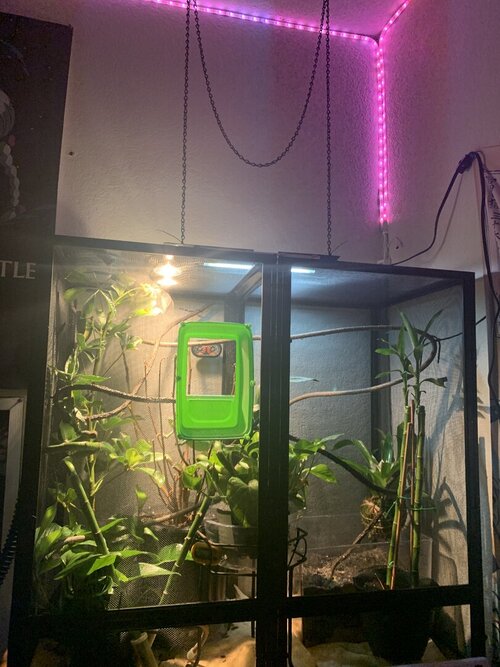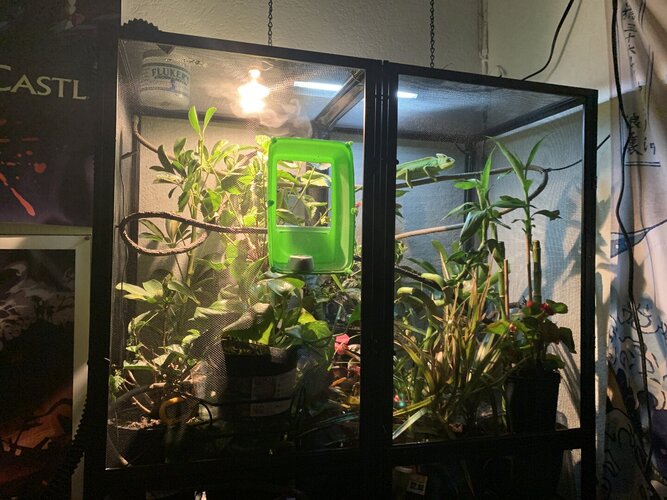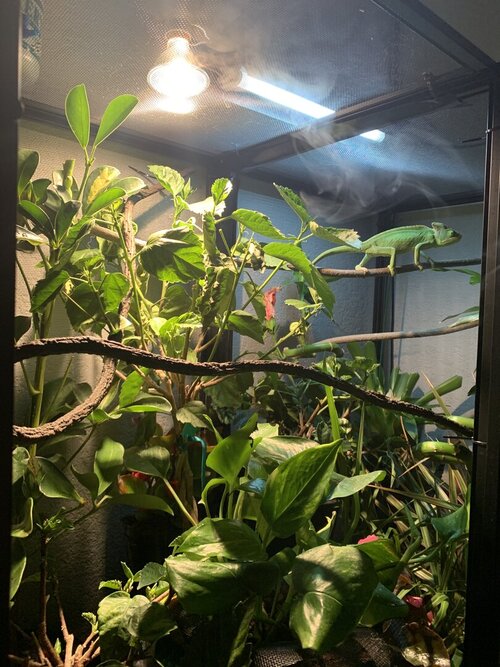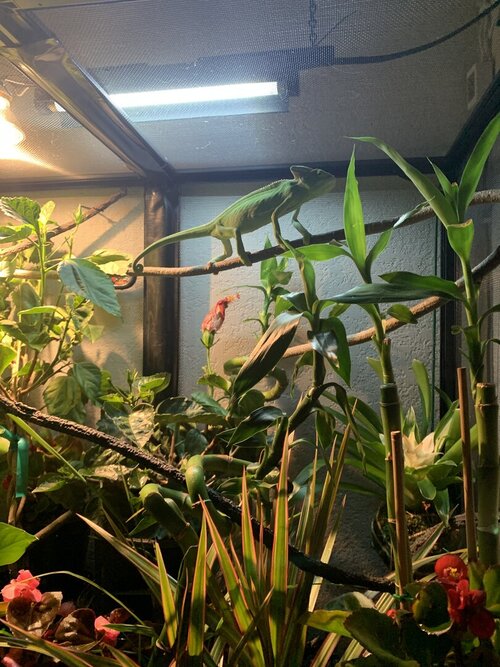Flick boy
Chameleon Enthusiast
Hi if you think her enclosure is big enough well fine but in my opinion its not. When I got my girl at the end of 2019 I had her in a 36 x18 x36 and I thought it was good until a put her in a 2x2x4 then it made sense for an arboreal reptile you may be able to find other people from our site sponsors for more feeder insects.









